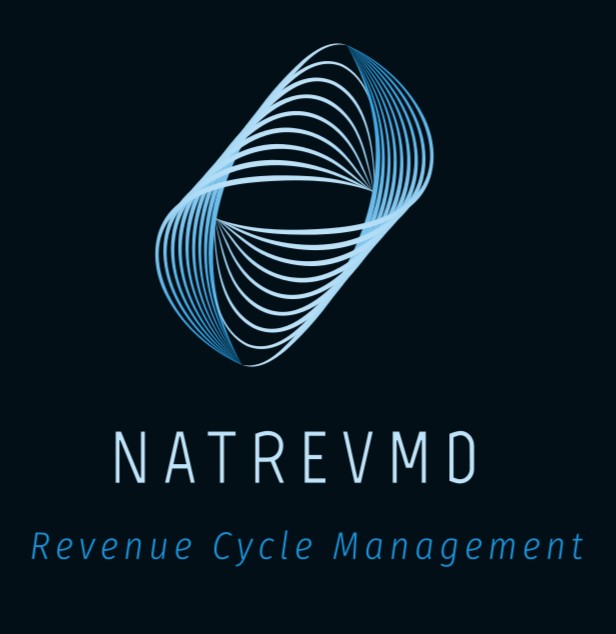As the healthcare industry moves forward into the new year, practitioners across the United States are gearing up for significant changes in Evaluation and Management (E/M) services. The impending implementation of the Healthcare Common Procedure Coding System (HCPCS) code G2211 on January 1, 2024, is particularly noteworthy. This add-on code is designed to address the inherent complexity of visits related to the evaluation and management of medical care services. In this comprehensive discussion, we will explore the background, implications, and guidance surrounding the implementation of code G2211.
Background: The genesis of code G2211 traces back to its proposal by the Centers for Medicare & Medicaid Services (CMS) in 2021. The intention was to compensate physicians for the additional work required in coordinating care for complex or serious conditions. Despite receiving mixed reviews, Congress mandated a delay in its implementation until the beginning of 2024. Undeterred, CMS has decided to move forward with the implementation, introducing several revisions to address identified issues.
Key Changes and Guidance:
- Addition to Telehealth Services: Code G2211 is now an add-on code to E/M service codes and has been added to the approved telehealth service list, including audio-only services. This allows for its application in both synchronous audio-visual E/M visits and time-based audio-only codes 99441, 99442, and 99443.
- Usage Expectations: CMS anticipates that the add-on code G2211 will initially be reported with less than 38% of all E/M codes billed, with an expected increase to approximately 54% over time. The actual usage may vary significantly by specialty.
- Non-Payable Situations: CMS has outlined specific scenarios where code G2211 should not be reported. These include instances where E/M services are reported with payment modifiers such as modifier -25, signifying separately billed visits on the same day as another visit or procedure.
- Eligible Encounters: Code G2211 is expected to be reported in conjunction with E/M services for encounters involving ongoing care related to a patient’s single, serious condition or a complex condition. The practitioner must be the continuing focal point for all care required by the patient, regardless of the specific purpose of the visit.
Guidance for Reporting Code G2211 in 2024:
- Modifier -25 Usage: Do not report G2211 on dates of service where modifier -25 should be appended to the E/M code.
- Dependence on E/M Code: G2211 cannot be reported without an E/M code for the same date of service.
- Patient Relationship Consideration: Report G2211 if an E/M visit is provided to a patient for whom the practitioner will be the continuing focal point for ongoing medical care for a single, serious condition or a complex condition, regardless of the purpose of the specific visit.
- Non-Payable Scenarios: Avoid reporting G2211 for encounters with patients not under ongoing care for a separate single, serious condition or a complex condition for a problem that is transient or potentially transient in nature.
Reimbursement and Documentation: Reimbursement for code G2211 with geographic modification is set at $16.04. Documentation should support three general types of visits qualifying for reporting of code G2211, with varying levels of detail based on the focus and nature of the visit.
Preparing for Implementation: The implementation of code G2211 requires careful consideration and adjustment on both billing and clinical fronts. Here are key areas to address in preparation:
- Clinical Staff Training: Clinical staff should receive training on documentation and communication related to the use of G2211.
- EHR Template Refinement: Electronic Health Record (EHR) templates need refinement to accommodate the new code, ensuring accurate and comprehensive documentation.
- Billing Team Education: Billing teams need education on payer-specific reporting and situational reporting, considering the nuances of code G2211.
- Practice Management Updates: Practice management scrubbers, including modifier flags and payer-specific rules, should be updated to facilitate accurate billing.
- Data Review Protocols: Data review protocols can assist in billing based on previous patient interactions and billing patterns, providing checks for appropriate code use.
- Compliance Reviews: Implement compliance reviews with follow-up education to ensure adherence to code G2211 reporting guidelines.
Understanding the New Medicare G2211 Code Guidance: Updated: December 5, 2023
For calendar year (CY) 2024, healthcare providers are bracing for significant changes with the implementation of the new Healthcare Common Procedure Code (HCPCS) G2211 by the Centers for Medicare and Medicaid Services (CMS). This add-on code for outpatient office visits, particularly relevant to primary care and chronic care providers, aims to recognize and compensate for the complexity of care associated with ongoing services for a patient’s singular chronic or complex condition.
With the impending changes, it’s crucial for healthcare professionals to understand the implications and nuances of this new code. In this article, we’ll delve into key questions and answers to provide current guidance on G2211.
Key Questions and Answers:
- When will HCPCS code G2211 be implemented? • CMS is expected to begin reimbursing for code G2211 on January 1, 2024.
- Should code G2211 be used only for new patients? • No, it is an add-on code that can be listed separately in addition to office/outpatient E/M visits for new or established patients (i.e., codes 99202-99215).
- Will code G2211 be covered by other third-party payers? • G2211 was created specifically for use on Medicare claims; therefore, there is no guarantee that other payers other than Medicare will reimburse for this code.
- Can providers bill G2211 with a procedure on the same day as an E/M visit? • CMS has stated that they do not expect G2211 to be used with an E/M service if modifier-25 is appended to the E/M service.
- Who will decide which condition is complex for G2211, and are there criteria for it? • CMS has not defined descriptions of a complex patient for G2211. They will use Medicare claims data to gauge whether the use of G2211 was appropriate.
- Can two providers of different specialties bill the add-on code on the same date of service? • CMS has not addressed this in the current Medicare Physician Fee Schedule final rule or provided any guidance at this time.
- Will providers be able to assign an E/M code with G2211 and any of the prolonged service codes? • CMS has not addressed the use of G2211 with prolonged codes or given any guidance if the add-on code may or may not be billed on the same day.
- Can add-on code G2211 be used with a telehealth visit? • CMS added G2211 to the permanent telehealth list, so it is believed that providers should be able to use the code even for an E/M carried out via telehealth.
- What is the reimbursement for G2211? • Based on the conversion factor for 2024, the approximate reimbursement will be around $16.08.
Coding Scenarios for G2211: Scenario 1 – Established Patient with Rheumatoid Arthritis and Gout • CPT codes: 99214, G2211 • This visit represents an established relationship with ongoing longitudinal care related to serious conditions and/or complex conditions.
Scenario 2 – Evaluation for Systemic Lupus Erythematous • CPT codes: 99205, G2211 • This visit represents a new patient relationship with ongoing longitudinal care related to the patient’s single, serious condition, or complex condition.
Scenario 3 – Established Patient with Osteoarthritis • CPT codes: 99213-25, 20611-LT • The pain in the shoulder is not deemed a long-term chronic condition at this visit.
Implications and Challenges: With the imminent implementation of G2211, healthcare providers, especially those in primary care and chronic care, must navigate potential challenges and changes in reimbursement. The conversion factor reduction for 2024 adds an additional layer of complexity, with a decrease from $33.89 to $32.74. This reduction is partly influenced by the reintroduction of G2211.
Changes to evaluation and management (E/M) services effective January 1, 2024, will significantly impact billing practices. The code G2211 is an add-on code to E/M service codes and cannot be reported without an E/M code for the same date of service. CMS expects that the add-on code will be reported in addition to E/M service codes for encounters associated with medical care services serving as the continuing focal point for all needed health care services.
It’s crucial for healthcare providers to adhere to CMS guidelines to ensure appropriate use of G2211. For instance, the add-on code should not be reported with a payment modifier, and it is not payable for certain encounters, such as routine care or care provided by a professional of a discrete, routine, or time-limited nature.
Conclusion: As the healthcare landscape evolves, providers must stay informed about changes in coding and reimbursement policies. The implementation of G2211 introduces a new layer of complexity, and providers in various specialties must carefully navigate these changes to ensure accurate coding, billing, and, most importantly, continued quality care for patients.
Healthcare professionals are encouraged to stay updated on any further guidance or clarifications from CMS. For specific inquiries related to coding and billing for the new add-on code G2211, providers can reach out to their respective practice management teams.
In the face of these changes, the healthcare community must adapt and collaborate to ensure the effective and efficient delivery of care while maintaining compliance with evolving coding and billing regulations. The introduction of code G2211 may pose challenges, but with proper education, training, and adherence to guidelines, healthcare professionals can successfully navigate the evolving landscape of Evaluation and Management services in 2024.
As we embrace the new year, let us be proactive in preparing for the implementation of G2211, recognizing it not only as a challenge but also as an opportunity to enhance compensation for the critical work performed in managing ongoing care for complex or serious conditions. By staying vigilant, healthcare providers can continue to prioritize patient care and contribute to the overall improvement of the healthcare system.





